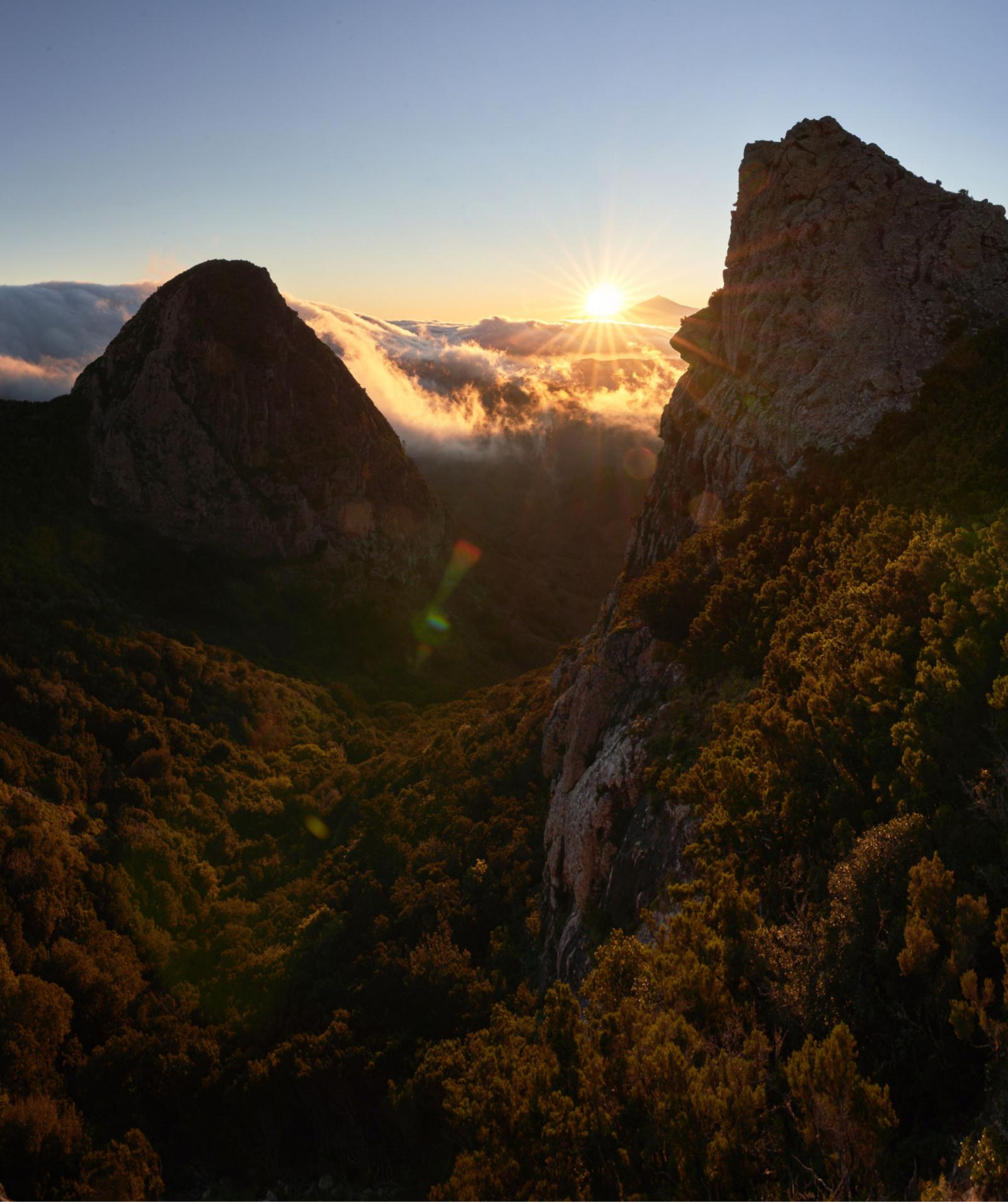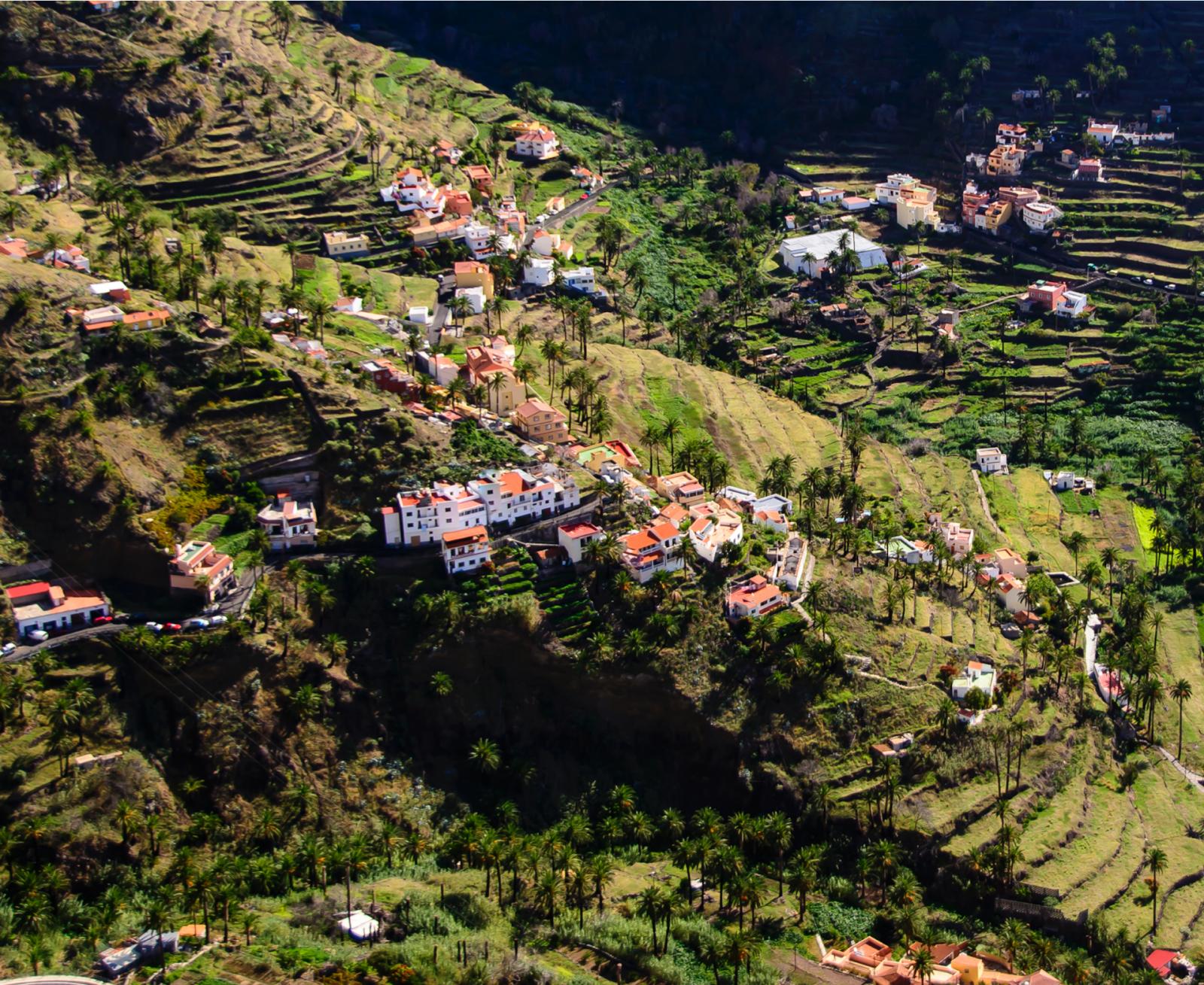Visiting La Gomera means coming into close contact with the island’s nature, with its lush forests, stunning cliffs, waters that are full of life and a mild climate all year round. All of that is interconnected by a broad network of paths that will make the trip an unforgettable natural experience.
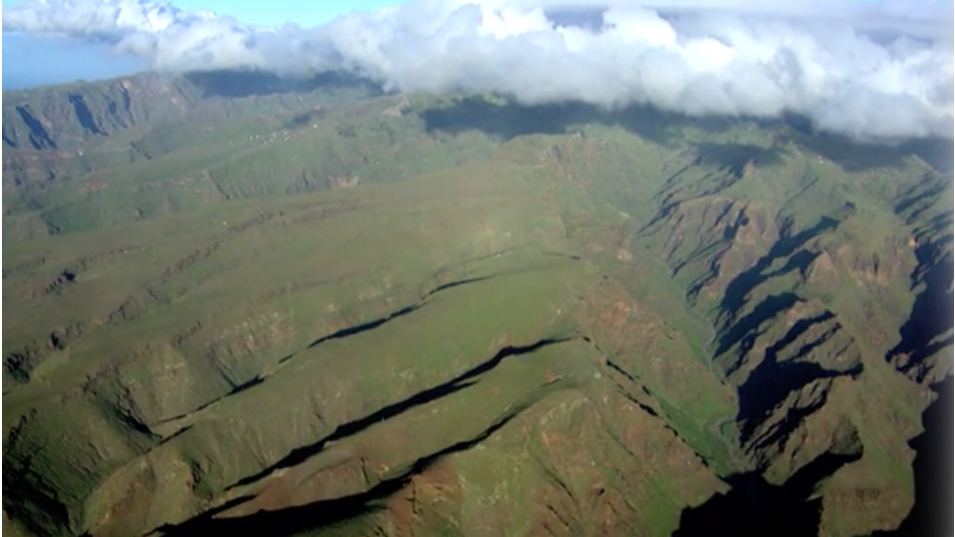

La Gomera – Biosphere Reserve
Since 2012, La Gomera has been catalogued as a UNESCO Biosphere Reserve, an international acknowledgment that showcases the rich and varied natural heritage of the island, both on land and in the sea, its sustainable nature and its respect for the environment. Categorised as excellent, the organisation wanted to highlight the island’s work in three key areas: conservation of resources, respect for development while preserving the environment and traditions, and, simultaneously, its work in environmental research, education and training. La Gomera fosters sustainable active tourism that respects things such as traditional agriculture and, of course, protected areas.
La Gomera also has endemic species of fauna and flora, in particular, the giant lizard of La Gomera (Gallotia bravoana), a reptile that was thought to be extinct until 1999. Risco de la Mérica, in the Valle Gran Rey, is their only known natural habitat and is also home to a conservation centre for reproduction of the species in captivity, where more than 300 lizards have already been born.

Garajonay National Park
Among all of the island’s natural treasures, the laurisilva forest in Garajonay National Park stands out. A forest from the Tertiary era that is more than 66 million years old, where the extreme humidity and mild temperatures mean that a wide variety of trees keep their leaves all year round. This led to Garajonay being declared a UNESCO World Heritage Site in 1986. Its name comes from the romantic Gomera legend of Gara and Jonay, the island’s own ‘Romeo and Juliet’. More than 800,000 tourists visit the park’s almost 4000 hectares each year to have fun, connect with nature and feel the magic of this unique natural space.
The laurisilva forests, together with other flora that is typical of La Gomera, form the ‘monteverde’. That’s the name given to the formations of fern, beech, holly, heather and acacia that grow there. In Garajonay, we find the most ‘monteverde’ in the entire archipelago, generally on cliffs and places that are hard to access, although the dominant scenery on the island is palm groves. This is because, along with being able to adapt to almost any terrain, palm trees are used for many crafts and are the source of the renowned local palm honey. Another fantastic piece of nature you can discover is the Canary Island juniper, a typical small tree or bush that is a variant of the Mediterranean juniper. The largest juniper forest in the Canary Islands lies between Vallehermoso and Agulo.
Within the park you can find the Laguna Grande recreational area and outside it is the Juego de Bolas visitor centre. The highest point in the park, at the peak of the Alto de Garajonay, is a natural viewing point, where you can see the sky without any light pollution, the perfect spot to be amazed by the stars in the night sky or look out over the majestic green carpet of trees that characterises La Gomera.
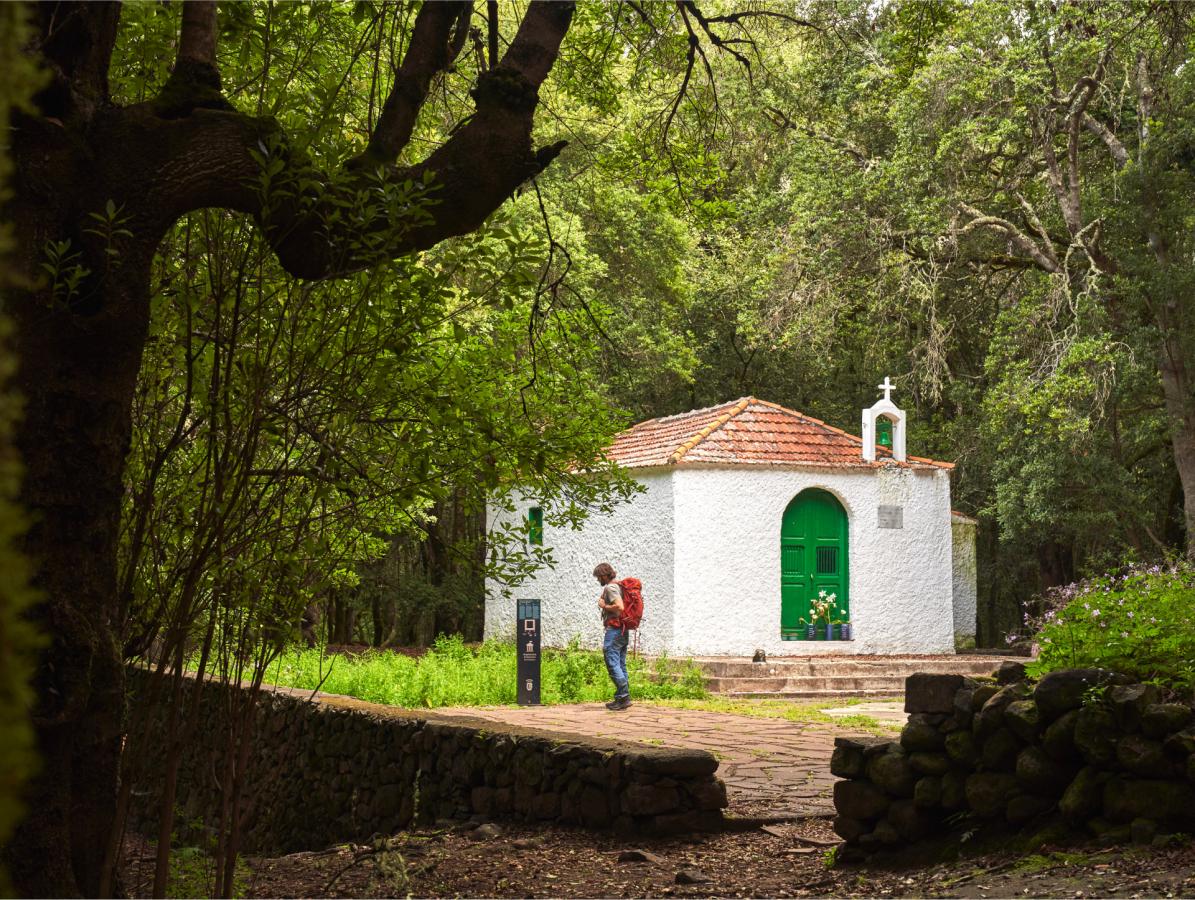

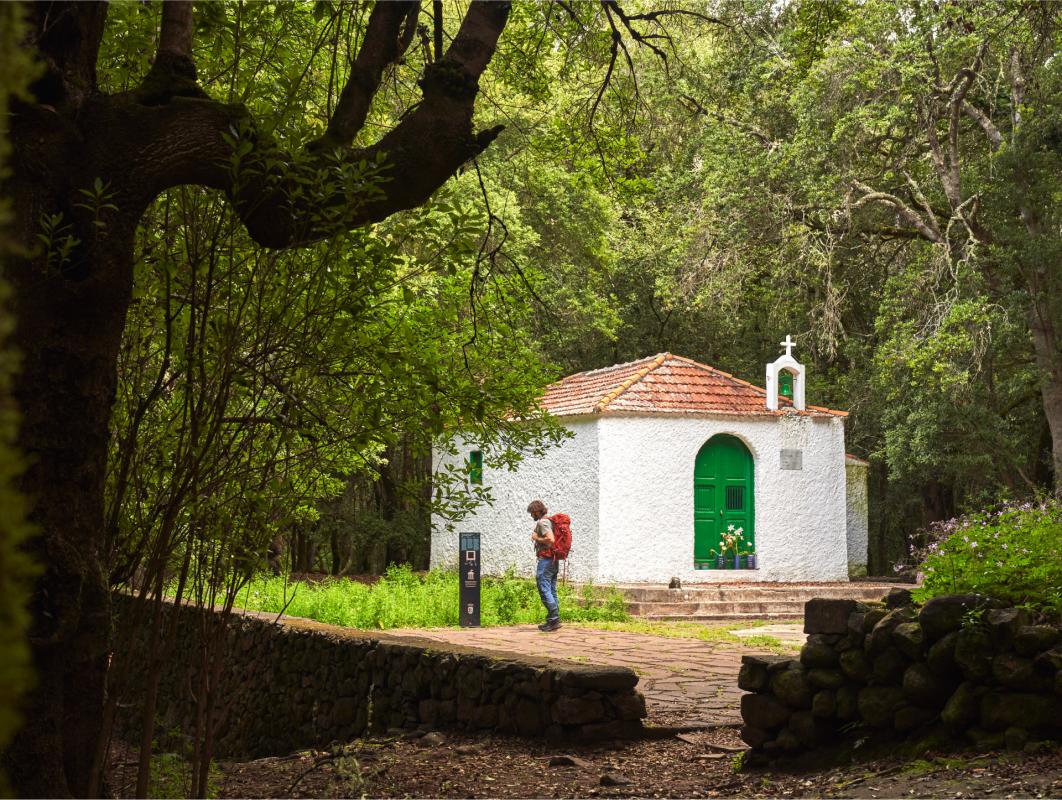


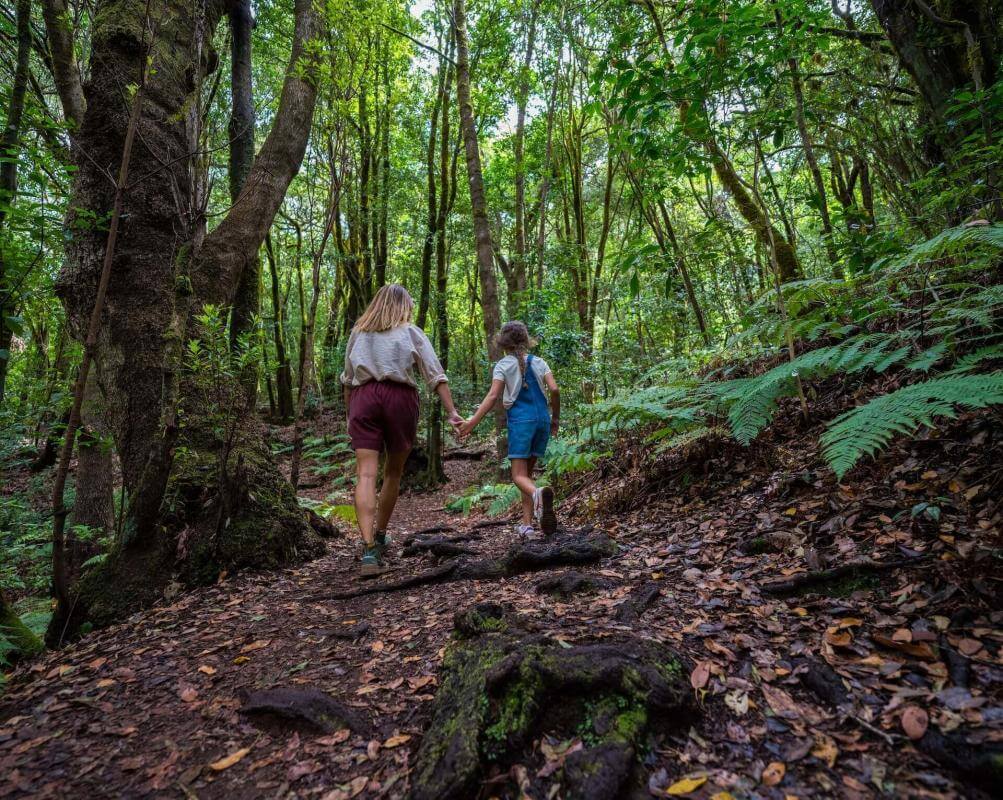

Charming hiking trails
Alongside Garajonay National Park, La Gomera has 16 other natural spaces that are protected by the Canary Islands Network for Protected Natural Areas, such as the Benchijigua Nature Reserve in San Sebastián and the Majona Natural Park between San Sebastián and Hermigua. All of them can be covered on foot thanks to the island’s impressive network of more than 650 kilometres of signposted trails that cross it from top to bottom. For years, the trails were the only overland links, but they have now become the prettiest way to discover the island and all its secrets.
A unique way to discover the wonders of La Gomera with every step, adapting the pace to the hiker’s needs, whether they are experienced or an amateur. The best way to leave behind the stress of the city, forget your routine and take a breath of fresh air. Along the trails, you can reach locations that will make you wish you could freeze time and just relax with no hurry, like El Caserío de Imada, snuggly sheltered at the bottom of the Barranco de Refate in Alajeró or Taguluche in Hermigua, a valley full of whitewashed houses and stunning palm trees leading down to the sea.
A window to the world
Another great thing about La Gomera is how it offers breath-taking views from natural enclaves where you can discover the entire island from high up above. At the Abrante Viewing Point, a glass platform suspended in mid-air, you get the feeling that you’re flying over La Gomera. From the Fortaleza de Chipude in Vallehermoso, you can enjoy the best sunsets on the island, and in Hermigua, from the La Punta Viewing Point, you can admire the Santa Catalina Beach, a spectacular stony beach that is a true gift of La Gomera nature.



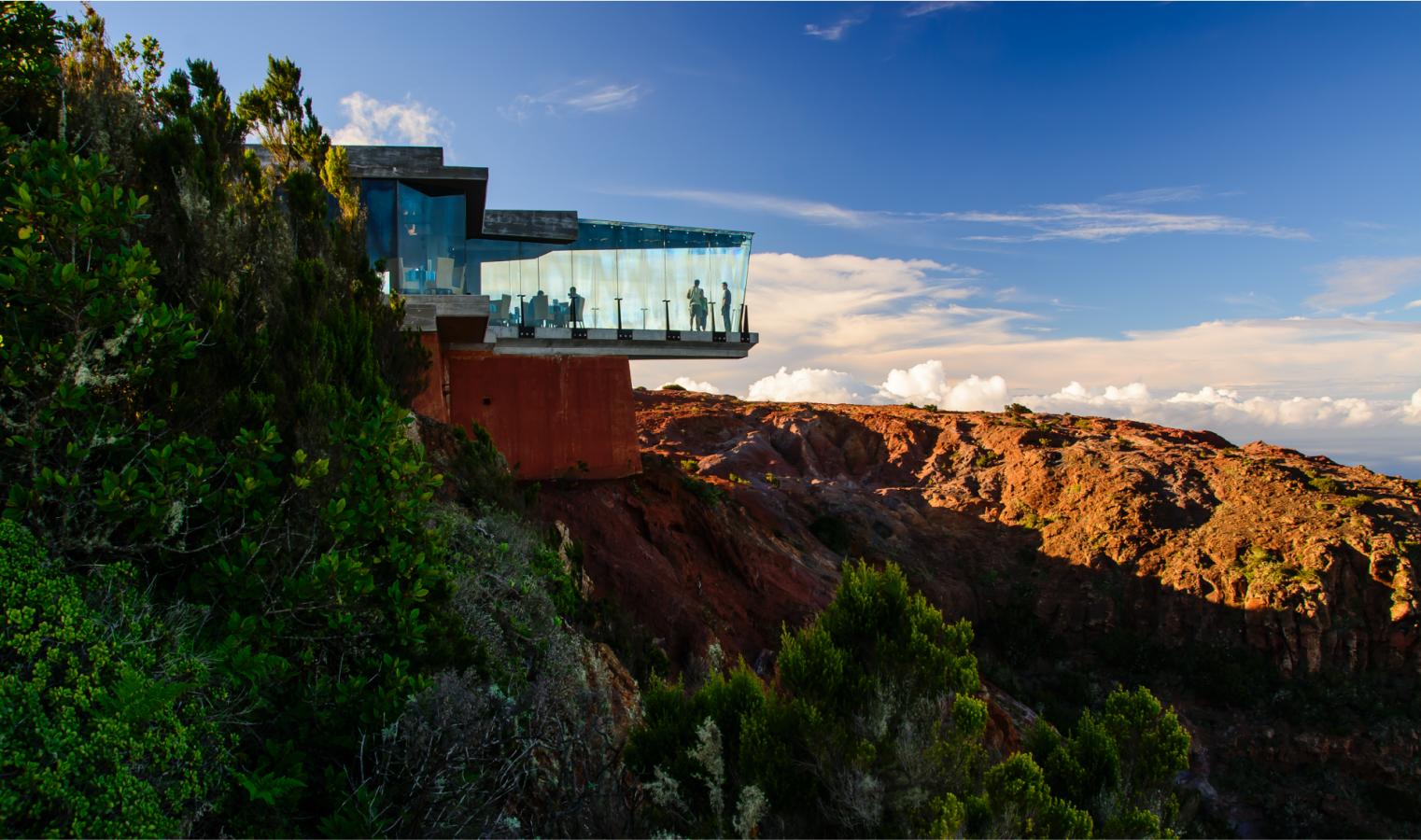


Cetaceans in La Gomera
But the nature of La Gomera isn’t limited to its trails. The waters that surround the island are full of life and it’s not uncommon to sight dolphins and whales in them, with up to 21 different species being documented. The transparent waters and the ocean’s temperatures create the perfect environment for enjoying these sea mammals. From the port of Vueltas in Valle Gran Rey and, on some days, from Playa de Santiago, there are daily excursions to see the whales and dolphins. The island of La Gomera and the waters surrounding it have the honour of being the first place in Europe to be named a Whale Heritage Site, joining places like California, South Africa and Australia.
Also on the coast is an astounding natural monument. Los Órganos is a striking volcanic cliff that looks like a giant stone organ with pipes delving down into the depths of the ocean, creating a stunning underwater landscape.





